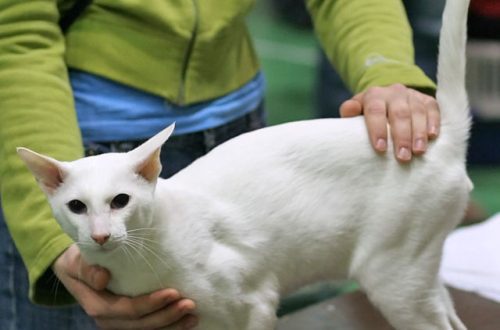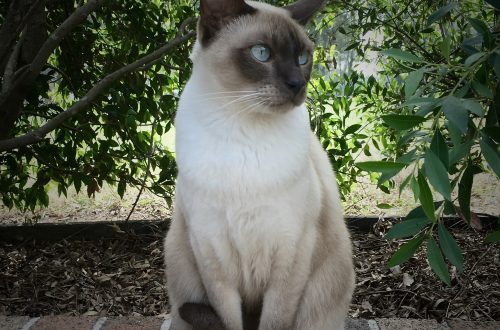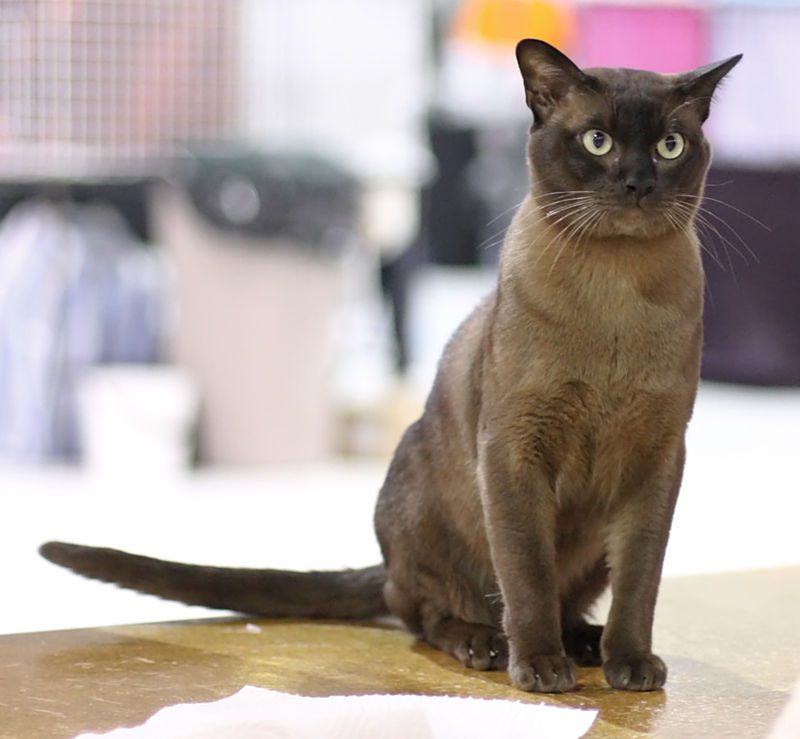
Burmese cat
Other names: Burmese
The Burmese cat is the epitome of stunning charisma and grace worthy of royalty. To earn the love of this beauty is very easy.
Contents
- Characteristics of Burmese cat
- Basic moments
- History of the Burmese cat breed
- Video: Burmese cat
- Appearance of a Burmese cat
- Photo of a Burmese cat
- The nature of the Burmese cat
- Education and training
- Care and maintenance
- Health and disease of the Burmese cat
- How to choose a kitten
- Photo of burmese kittens
- How much does a burmese cat cost
Characteristics of Burmese cat
| Country of origin | Myanmar |
| Wool type | Shorthair |
| Height | 30 cm |
| Weight | 3.5–6 kg |
| Age | 10–15 years |
Basic moments
- Burmese is a real dog in a cat’s body, which does not have a soul in its owner and is ready to follow on his heels.
- The grace of the animal does not at all fit with its impressive mass, which is why cats are called “bricks in a silk robe.”
- There are two breed standards – American and European, which differ from each other in appearance.
- Burmese cats retain their playfulness and activity to a ripe old age and will not give up chasing a thrown ball.
- The animal subtly feels the mood of the owner, so it will not bother with increased attention or, on the contrary, will make every attempt to cheer up the person.
- It does not require special conditions of detention and is therefore suitable even for those who first decided to get a cat.
- Burmese get along well with other pets, if they do not show excessive hostility.
- This breed is a great option for families with children: cats are condescending to overly active games and take part in them to the best of their ability.
- Animals are highly intelligent and easy to train.
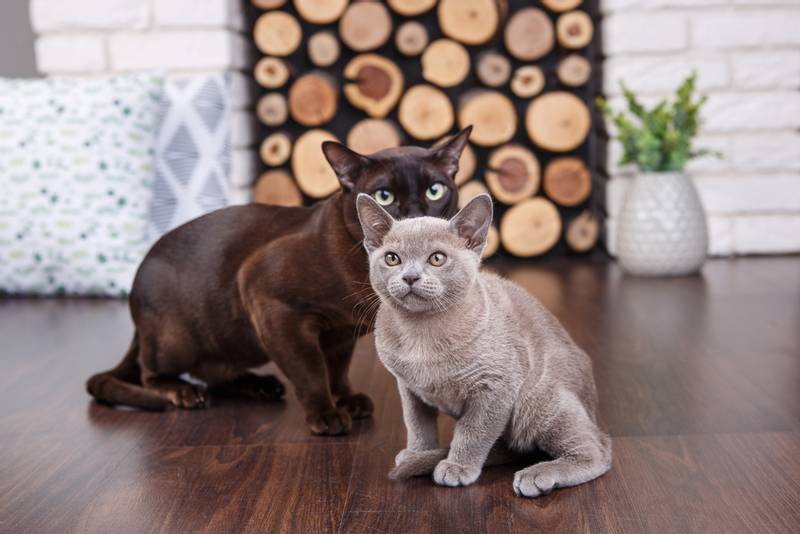
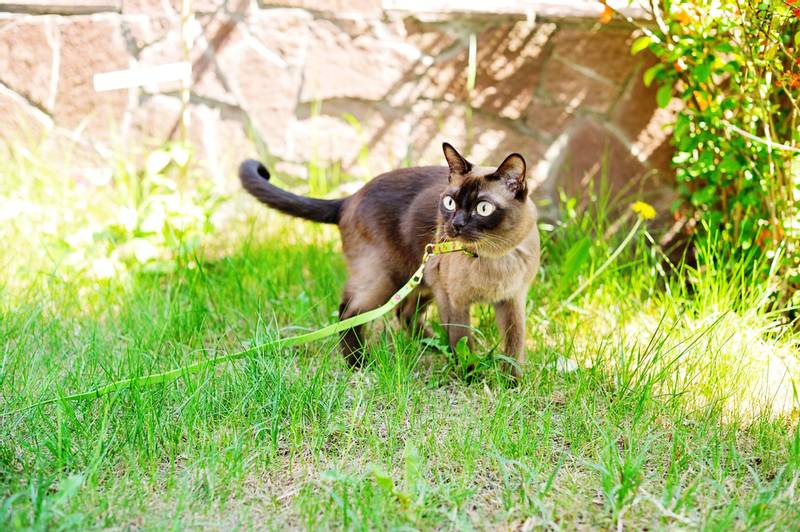
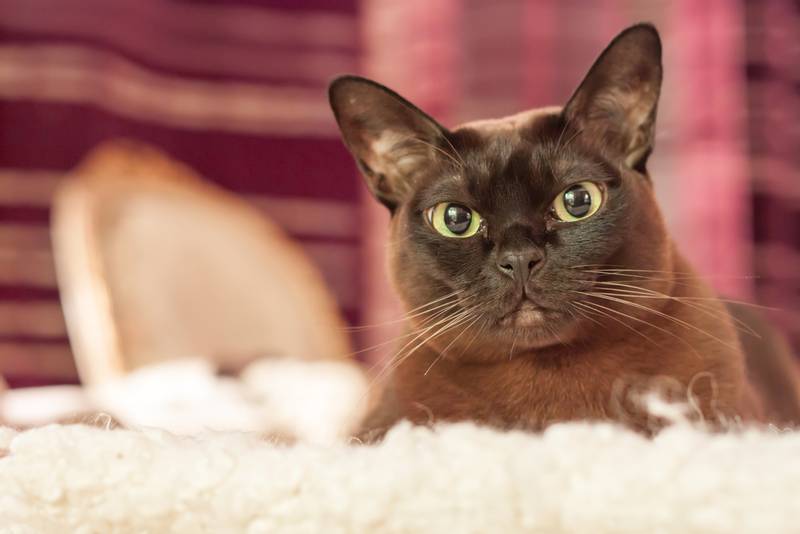
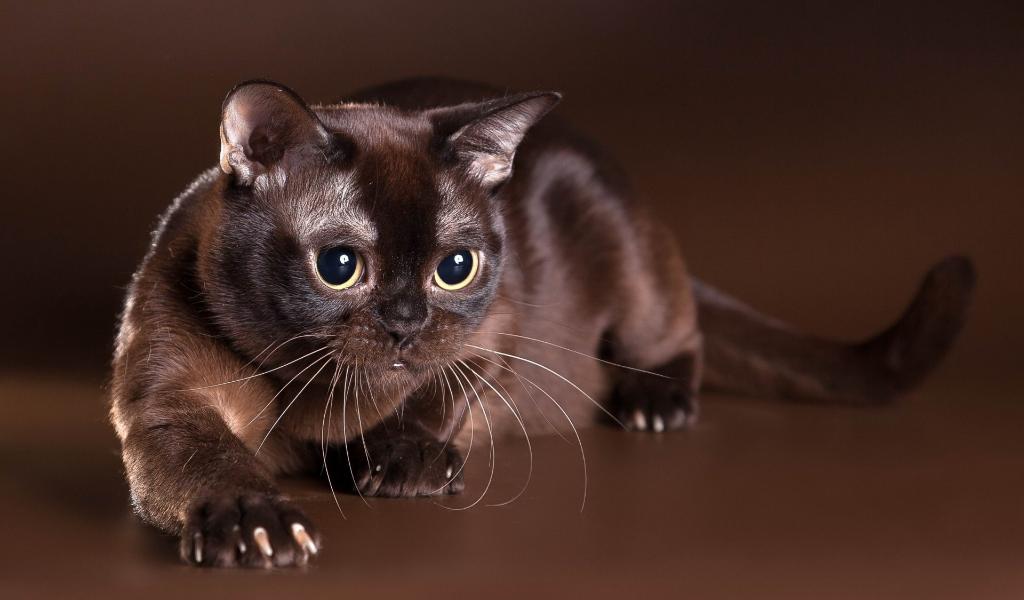
The Burmese cat is a short-haired breed with an energetic temperament. It seems that the sun of the Ancient East – the historical homeland of the animal – is still reflected in the honey-golden eyes of the Burmese. The appearance and friendly nature of this elegant beauty will not leave indifferent even avid admirers of dogs. Judgment, outstanding intelligence and wisdom distinguish the Burmese cat from its relatives. According to ancient beliefs, this breed brings wealth and happiness to the home of those who managed to become a “copper cat” best friend and loving owner.
History of the Burmese cat breed
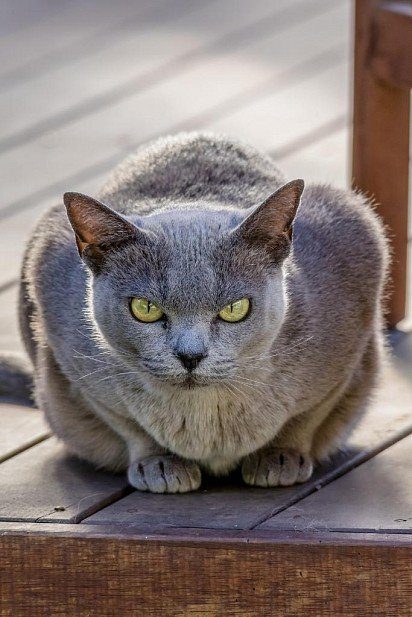
The state of Burma (modern Myanmar) has long been famous for its amazing landscapes and charm, inherent only in the countries of Southeast Asia. The virgin nature of the jungle contrasted with the snow-capped mountain peaks, and the white sand of the beaches contrasted with the stone buildings of ancient cities. It was on these mysterious lands that the ancestors of the Burmese breed, one of the most memorable in the world, appeared.
The first mention of these animals dates back to the XII century. Later, cats were awarded separate lines in the ancient book of poetry, which was replenished with new works during the XIV-XVIII centuries. No less clear evidence of the ancient origin of the Burmese are the images in the book of Siamese artists, in which, among all the representatives of the cat family, an animal with the physique and appearance of our oriental beauty stands out brightly.
The Burmese breed was highly revered by the inhabitants of the ancient state. These cats were allowed in the temples, as they were equated with higher creatures. The monks looked after them in every possible way, thereby demonstrating their commitment to religion and serving the gods. In those days, it was believed that the Burmese cat escorts the soul of its deceased owner to the afterlife, giving him eternal peace as a farewell. According to another legend, the Burmese brought good luck and wealth, so only aristocratic and royal families acquired these cats. Commoners had to be content with more “modest” breeds.
At the end of the 19th century, the paws of Burmese cats first set foot on the lands of Great Britain, where at first the animals were known as black Siamese. Over time, the breed spread to all continents of the world. An interesting fact is that the ancestor of the breed in the form in which we know it was not a purebred specimen at all, but a mestizo of Burmese and Siam. In the first half of the 20th century, retired US Navy physician Joseph Thompson acquired an adorable kitten named Wong Mau. The baby has grown into a graceful and royally majestic cat of reddish-brown color with dark tan. Fascinated by the personality and appearance of the pet, Thompson set about looking for like-minded people who would contribute to the development of a new breed and the creation of its standard. They were scientists from the University of California and enthusiasts from the local club of felinologists.
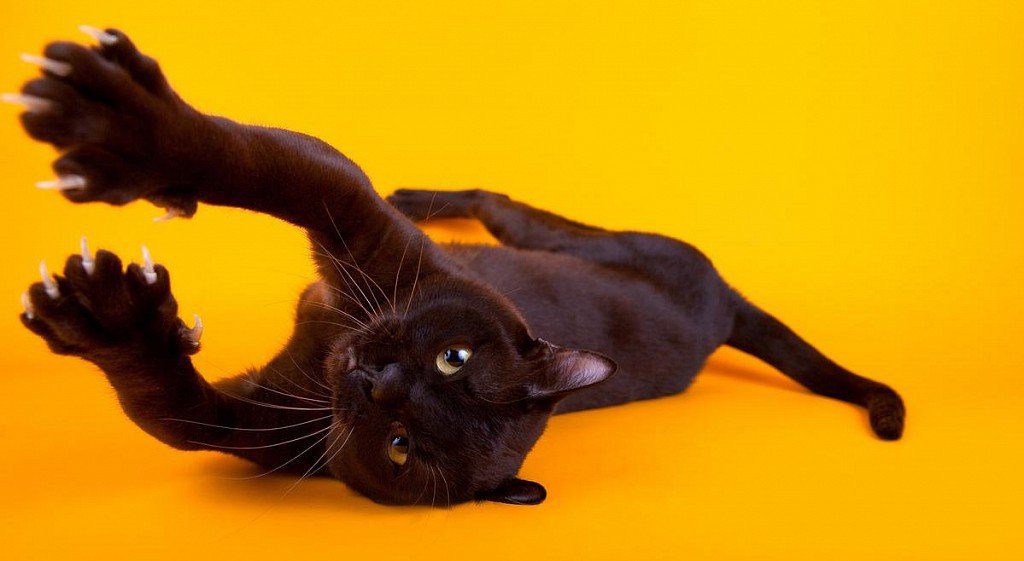
Based on the resemblance of Wong Mau to a Siamese cat, Joseph Thompson chose the ideal partner for her mating – a Siamese named Tai Mau. In the first litter, babies of several colors were born: seal point and dark hazel. This meant that Thompson’s pet herself was a mixed Siamese and Burmese breeds: otherwise the marks would not have appeared. However, the decisive criterion in the selection of kittens for further breeding was precisely the chestnut color.
Crossing the offspring of Wong Mau and Tai Mau “gave” three colors: chocolate with dark tan, brown and sable. Of these, Joseph Thompson liked the last one the most. According to a retired doctor, it was this color that looked the most noble and deserved further development.
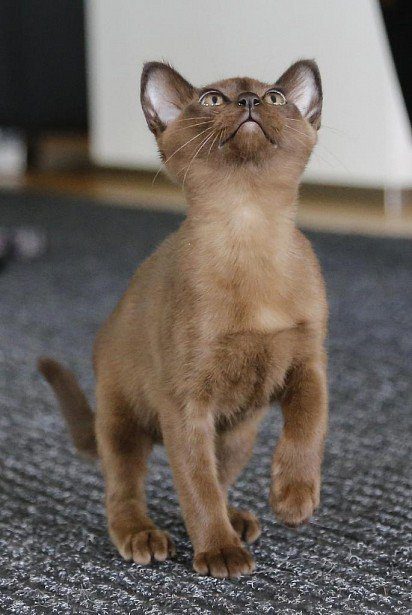
The colossal experience of felinologists played a role: in 1934 the world saw the first standard of the Burmese breed. At the same time, three generations of its representatives were registered. Two years later, the American organization CFA registered the Burmese standard. Given that work on the creation of a new breed began only in 1930, such an early success could be considered triumphant.
Burmese cats enjoyed universal love and recognition, but the number of individuals remained very limited. For a wider distribution of the breed, it was decided to cross the Burmese with Siamese and other cats, the color of which was a bit like Wong Mau. This led to the emergence of a huge number of mestizos, and in 1947 the CFA stopped their registration. Since then, the pedigree of each kitten has been carefully checked: for example, it had to include at least three purebred generations.
The ranks of Burmese breeders thinned considerably, and employees of American nurseries entered the arena. Thanks to their efforts and organized work on the revival of the breed, in 1957 the registration of Burmese cats was resumed: the number of purebred individuals increased several times. A year later, the UBCF organization set about developing a generally recognized breed standard. The result was achieved in 1959 and has not been changed since then. In terms of coloration, the first CFA to register was brown, later called sable due to its resemblance to the fur of this animal. Long-term crossing resulted in the appearance of other coat colors: platinum, blue, golden (champagne).
Burmese cats did not limit themselves to conquering the USA and continued to walk around the world with soft paw pads. In 1949, three representatives of this breed appeared on the lands of Great Britain and caused universal love and recognition. During the second half of the 20th century, clubs and societies of Burmese cat lovers were created in Foggy Albion. To increase their numbers, breeders crossed animals with the Siamese breed , which by that time had acquired features familiar to us. For this reason, noticeable differences appeared in the appearance of the English and American Burmese. So there was a second breed standard – European. It is not recognized by the CFA, exactly like the American one – by the GCCF organization. Crossbreeding of cats belonging to different standards is prohibited.
Having earned the love of America and England, the Burmese breed set foot on the lands of Australia, where it managed to displace the former favorites – the British and Abyssinians – and gain dizzying popularity. In Russia, the first Burmese appeared only at the end of the 20th century, but every year they win the hearts of cat lovers more and more.
Video: Burmese cat
Appearance of a Burmese cat
Looking at the embodiment of grace and grace in this thin feline body, one cannot in any way assume that the Burmese turn out to be unexpectedly heavy, one has only to pick them up. For this feature, they have earned a playful nickname – “bricks wrapped in silk.” Cats are always heavier than cats: 4.5-5 kg and 2.5-3.5 kg, respectively.
The Burmese cat belongs to the short-haired breeds of medium size. Belonging to one or another standard determines the appearance of the animal: Americans are more stocky in comparison with relatives from Europe.
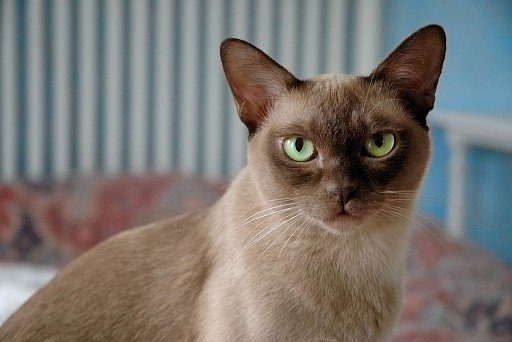
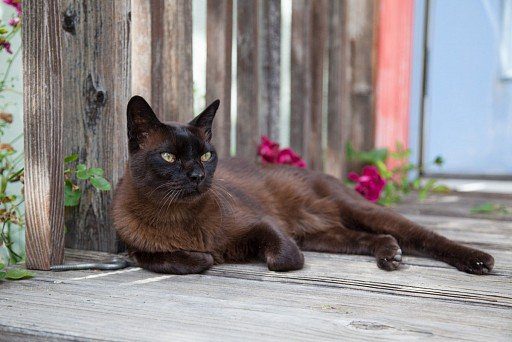
Head and skull
The head of the European Burmese is wedge-shaped, while that of the American Burmese is slightly wider. The frontal part of the skull in both representatives of the breed is smoothly rounded. Pronounced flat “areas” in front or profile are invisible.
Muzzle
Both Burmese breed standards are distinguished by a well-developed muzzle that matches the smooth contours of the head. The transition from the nose to the forehead is pronounced. Cheekbones are clearly visible. A strong chin forms a straight vertical line along with the tip of the nose. The American Standard Burmese has a broader and shorter muzzle, but the stop is as defined as the European Burmese.
Ears
The triangles of the ears are far apart, and their outer side emphasizes the line of the cheeks (uncharacteristically for adult cats). The wide base flows smoothly into softly rounded tips. Due to the slight tilt of the ears forward, the Burmese always looks alert.
Eyes
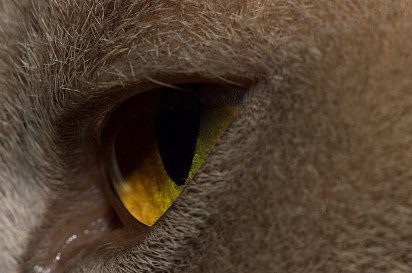
The eyes of the Burmese cat are set wide apart from each other, quite large and expressive. A slight “east” slope of their upper line gives the breed a resemblance to Orientals, while the lower one is rounded. Burmese eyes shimmer with all shades of yellow – from honey to amber, while a rich golden tone is more preferable. Pay attention to an interesting feature: the older the animal, the less bright the color of its eyes seems.
Jaws and teeth
If we compare the jaws of a Burmese cat, it can be noted that the lower one is more pronounced and therefore clearly visible when the animal is in profile. The bite is correct.
Neck
The Burmese breed is characterized by the presence of a long and thin strong neck.
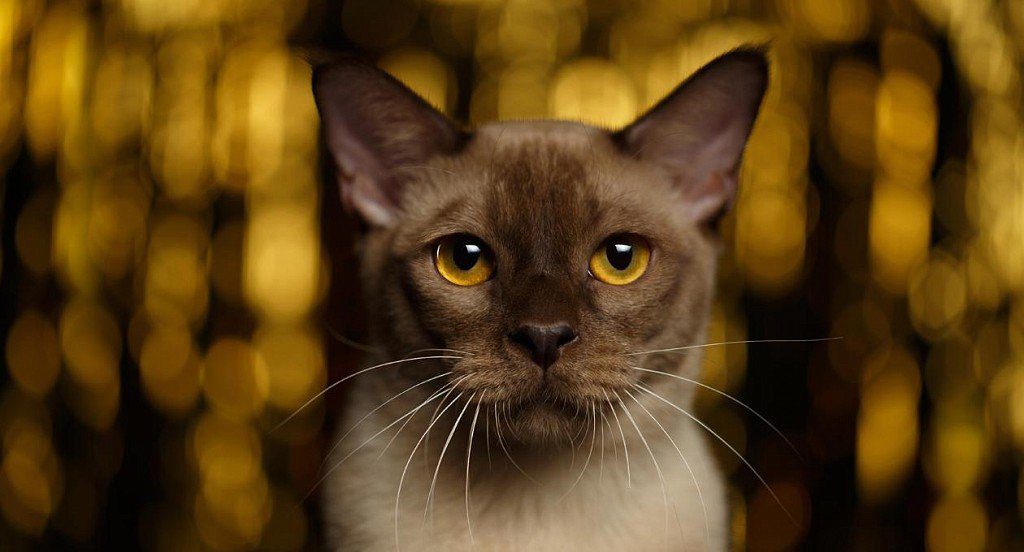
Frame
The compact and taut body of a cat is the embodiment of grace combined with the firmness of well-developed muscles. The strong chest has a rounded shape. The back of the Burmese is straight from the shoulders to the base of the tail.
Tail
Differs in average length and absence of bends. While not too broad at the base, it tapers to a gently rounded tip.
limbs
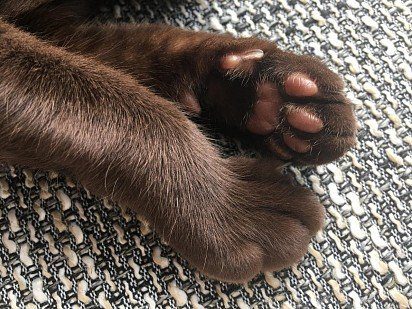
The limbs of the Burmese cat are in proportion to its body. They are relatively thin, of medium length. They end in graceful oval paws. The number of fingers on the front and hind legs varies: five and four, respectively.
wool cover
Representatives of the Burmese breed are characterized by thin and short hair. It fits snugly to the body of the animal and has almost no undercoat. To the touch – smooth and silky; shimmers beautifully with every graceful movement of the cat.
Color
The upper part of the body of the Burmese is darker in comparison with the lower one, and this feature does not depend on the color of the animal. Even tone is preferred, but both the American and European standards allow discreet points on the muzzle, ears, limbs and tail. Kittens and young individuals can boast of a tiger moiré.
The recognized Burmese color standards include sable, blue, chocolate, platinum (purple). Now there are various tortoiseshell shades based on them, as well as cream and red colors.
Possible vices
The defects of the Burmese breed include:
- tiger stripes on the limbs of adult cats;
- strongly elongated and oblong muzzle;
- round or oriental eye shape;
- a sharp narrowing of the muzzle under the cheekbones;
- noticeable hump on the nose;
- sunken cheeks.
The breed standard also mentions disqualifying signs:
- malocclusion and developed upper jaw;
- green or blue eyes;
- wrong shape of the tail;
- white points on wool;
- strabismus;
- deafness.
Photo of a Burmese cat
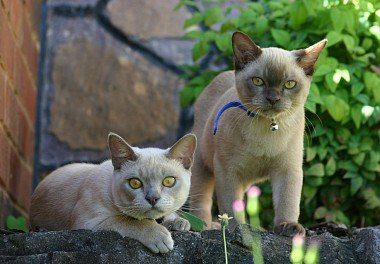
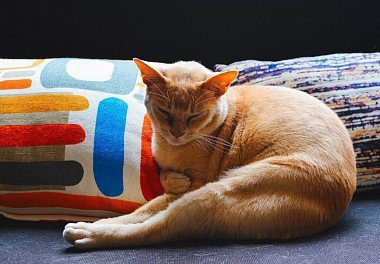
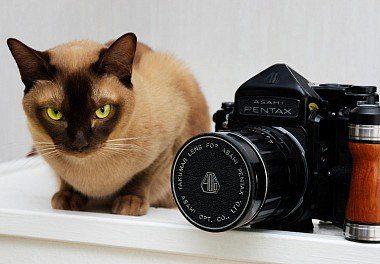
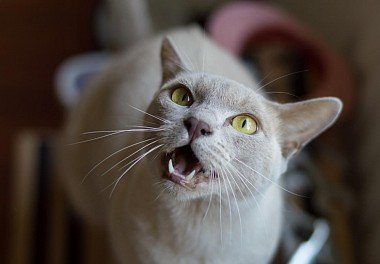
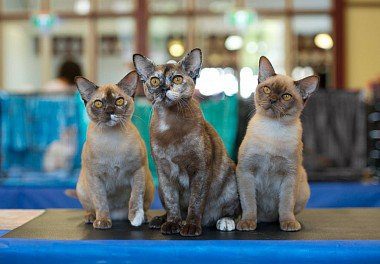
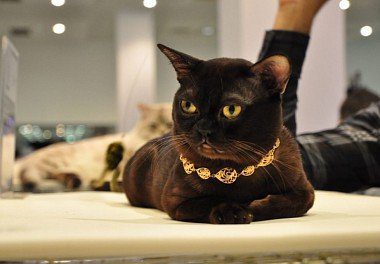
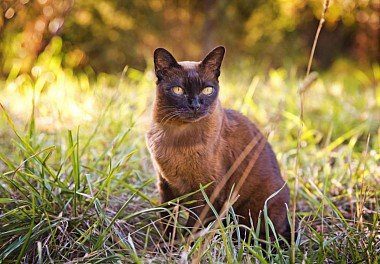
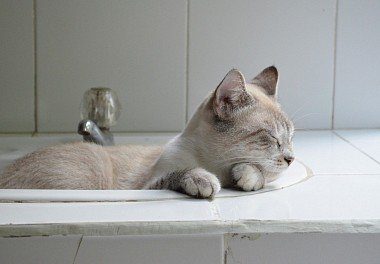

The nature of the Burmese cat
Among all cats, you will not find an animal more devoted and cheerful than the Burmese. Do not expect to find a calm and reserved character in this breed. If the cat suddenly froze, then know that this is not for long. It is possible that in this way your pet is studying the situation and “planning” an entertainment program for the rest of the day. Activity is a constant companion of Burmese cats up to old age. Do not hide your pet’s favorite toys in a box, referring to her old age. Many elderly Burmese will still give odds to kittens and happily run after a sunbeam or a fly that has come from nowhere.

Representatives of this breed have gained fame as cats with a dog’s soul. They love to spend time with their owners and participate in every moment of their lives, responding to care with boundless tenderness. Between a person and sleeping in an easy chair, the Burmese will choose the former without hesitation. This cat likes physical contact with the owner. She will gladly follow you on your heels and climb under the covers at night to get her portion of love.
Burmese cats have a subtle sense of mood and will take any action in an attempt to bring a smile to your tired face. These animals are reputed to be ardent lovers of sincere “conversations” – and not with their relatives, but with humans. Get ready for the fact that the pet will express itself in cat, while keeping prying eyes on you. Her gentle purring will brighten up even the most difficult and unpleasant day.
An interesting feature of the Burmese is their different attitude towards the owner, depending on the sex. Cats tend to love all family members equally, while a cat happily runs into arms and fawns only on her favorite. This is striking when there are two individuals of different sexes in the house. The cat is destined to become the best friend who will relentlessly follow on the heels and try to smooth out your problems with the pleasant weight of his body. Cats, on the other hand, prefer to adapt to the mood of the owner and are never imposed if he needs solitude.
The Burmese breed gets along well with other pets. These cats can get along with even the most surly dogs and certainly won’t make a parrot their holiday dinner.

The Burmese are no less friendly towards children. They will never scratch the baby for a careless poke or too strong hugs. Moreover: the Burmese cat itself will take part in the children’s game. Her graceful and light jumps delight and often gather all family members who want to admire the flexible beauty. Such attention to the modest person of the Burmese acts as a balm for the soul: the animal will jump even higher, bend even more, wanting to hear sincere exclamations of admiration.
Representatives of this breed cannot stand loneliness, because they constantly need a partner for games. If you spend most of your time away from home, take care of your pet’s state of mind. The second Burmese cat is ideal. Be sure: the animals will not get bored in your absence, and upon their return they will be able to amuse with active games of “catch-up”.
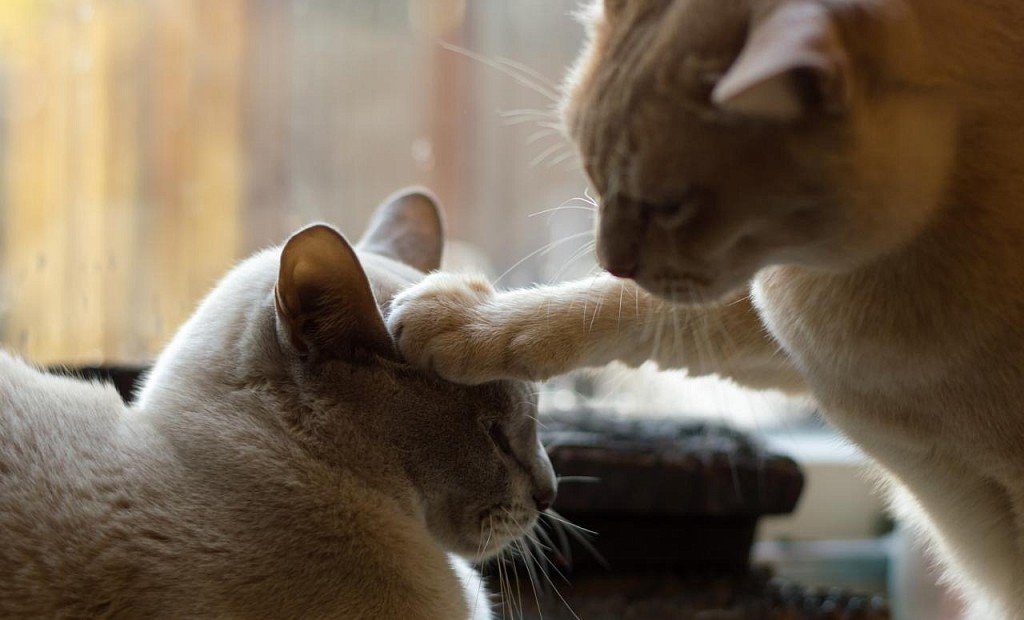
Education and training
Among all breeds, Burmese are distinguished by a high level of intelligence, which is confirmed by many owners of these cats. They can easily open a door that is not tightly closed or reach out with their paw to the switch to turn off the big “sun” under the ceiling. With sincere desire and patience, you can easily teach your pet simple dog commands: “Sit!”, “Lie down!” and bring an abandoned toy.
Burmese cats easily get used to the litter box and regularly use it as a toilet, so unexpected “bombs” in slippers and shoes will not lie in wait for you.
Care and maintenance
Representatives of the Burmese breed are completely unpretentious in their care. Short hair needs only combing once a week (during shedding it is recommended to increase this procedure). In this case, you can use a special antistatic agent. There is no need to regularly arrange a “bath day” for your beauty: Burmese are very clean by nature and therefore monitor the condition of the coat on their own. All you need to do is wipe your cat daily with a barely damp cloth or piece of suede to remove dead hairs and apply a glossy sheen to the animal’s silky coat.
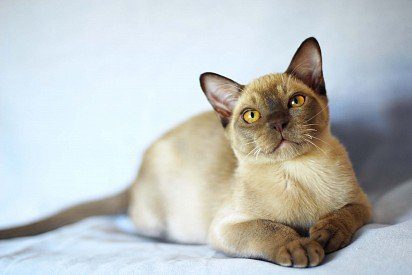
However, if the cat is dirty somewhere, or you plan to take the first prize at the exhibition, wash your pet with a mild shampoo for short-haired breeds. Do not forget to regularly shorten the claws with a special pruner if the scratching post does not attract your beauty at all.
Particular attention should be paid to feeding the Burmese cat, otherwise you will become a frequent visitor to veterinary clinics. It is worth shelling out for premium dry food. They contain a complex of vitamins and minerals that will allow the Burmese to retain its noble appearance, and its coat to shimmer beautifully in the light.
It is not recommended to feed the animal with the same food. Burmese cats can be very picky, and it is possible that after a month they will not even go to a bowl filled with their previously beloved food. It is recommended to dilute the animal’s diet with solid food: this will prevent the formation of tartar.
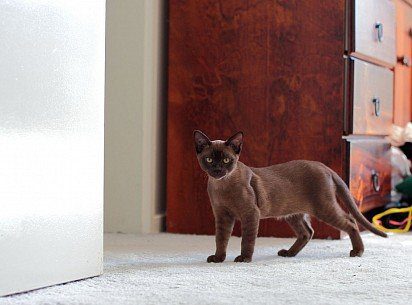
Pay attention to an important feature of feeding. As long as a mischievous kitten is running around your apartment, you should not limit him in food. However, this cannot be said about an adult animal, which easily gains weight and soon turns into a clumsy bun on its paws. Make sure that your heart does not melt at the plaintive, begging glance of the Burmese, and the cat will retain its natural elegance for a long time.
Is there a lot of food left after a fun feast? Do not rush to share it with an animal: not all “human” products are easily digested. Should be excluded:
- pickled, spicy and fried foods;
- from vegetables – tomatoes, garlic, onions;
- from fruits – raisins and grapes;
- pork in any form;
- boiled potatoes;
- tubular bones;
- legumes;
- mushrooms.
Drinking water must be filtered. If you want to pamper your Burmese, buy bottled water of the highest category. But you should not boil it: this is fraught with the development of urolithiasis in your pet.
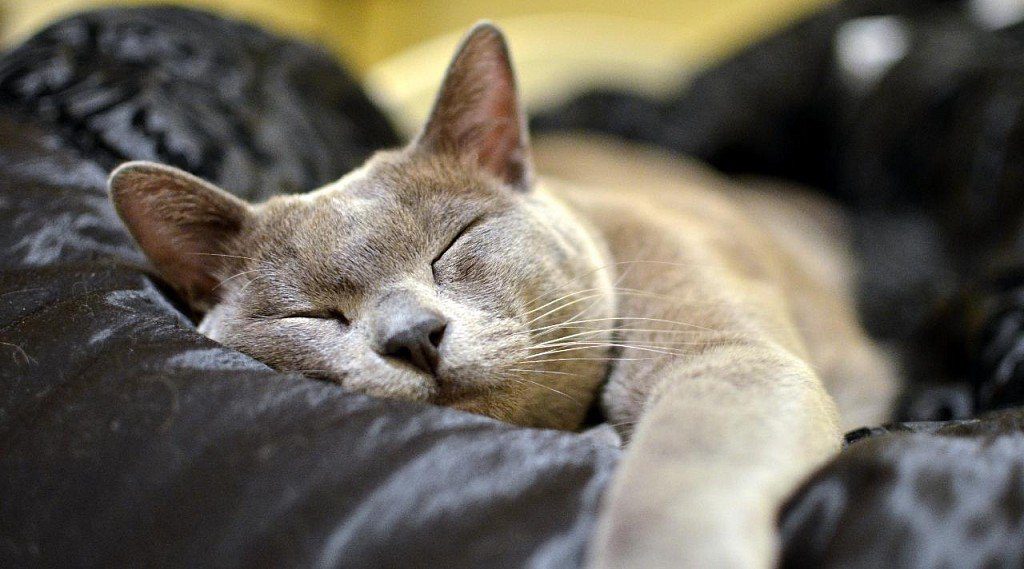
Health and disease of the Burmese cat
Among all breeds, it is Burmese that has strong immunity. These cats are not subject to hereditary diseases, which makes them excellent specimens for breeding. But still, there are pathologies from which the Burmese suffer. Among them:
- labored breathing;
- severe lacrimation;
- skull deformity;
- inflammation of the gums;
- tail defects.
To keep your pet healthy, regular visits to the veterinarian and vaccinations are recommended. Anthelmintic drugs should be firmly established in the animal “first aid kit”. Even if your cat does not go for a walk, it is necessary to give medicine every six months. With a regular stay away from home – once every three months.
How to choose a kitten
Burmese kittens are weaned from their mother at the age of 3-4 months, when the physical and psychological health of the babies is no longer at risk. Be prepared for the fact that, due to the characteristics of the breed, kittens may look much smaller than their relatives, but this is by no means a vice. Do not be confused by the clear discharge from the eyes: this liquid serves to cleanse them. However, the yellow or white color of the “tears” should be an alarming bell and a reason to visit the veterinarian.
The color of Burmese kittens is formed up to a year, so sable wool initially casts shades of beige. If you are planning to get a pet to participate in exhibitions, pay attention to an adult animal.
It is best to purchase purebred Burmese in specialized catteries: this way the chances of getting a cat full of energy and health in the future increase significantly. The bird market is the last place to go in search of a future friend.
Photo of burmese kittens
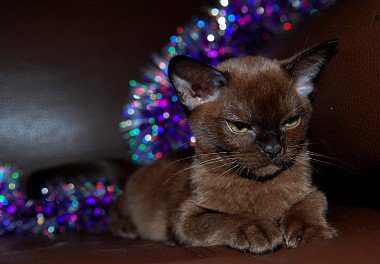

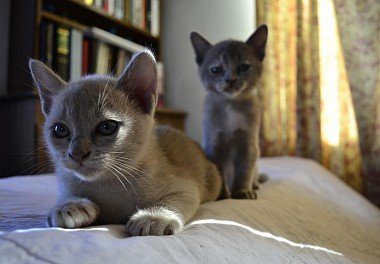
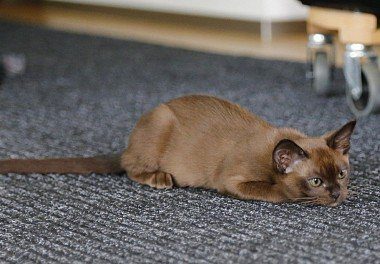
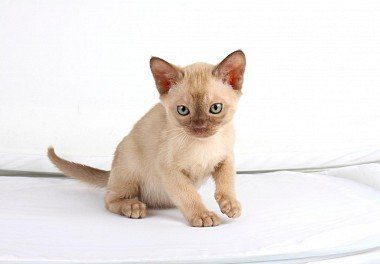
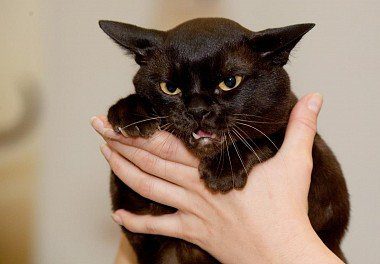
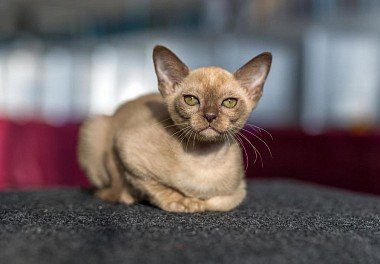
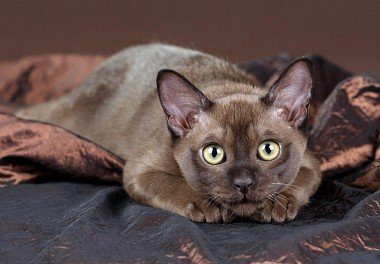
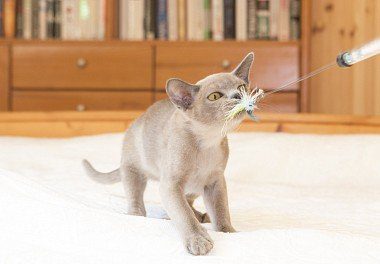
How much does a burmese cat cost
The price of Burmese varies from 250 to 700$, depending on the place of purchase of the animal and its pedigree. Abroad, these figures increase significantly: from 600 to 750$. In pet stores, the price may be less, but do not be tempted by this. However, if you need a devoted friend, and not a future show winner, you can take a baby without an outstanding pedigree.
Fortunately, many catteries provide a choice between elite kittens and those with disqualifying traits. The latter are often sold with the condition of mandatory castration, since such animals are not suitable for breeding and development of the Burmese breed.




